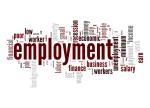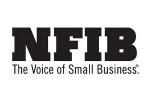CHICAGO — As we enter into 2024, it pays dry cleaners to stop for a moment and review the market and economic conditions they are in that have been affecting their business, as well as gather ideas to build momentum to make the most of the new year.
In Part 1 of this series, we reviewed elements of the past year that had direct impact on the coming 12 months, including the ever-tightening labor market. In Part 2, we looked at possible solutions, along with predictions about the economic landscape of 2024. Today, we’ll conclude by exploring the reasons why 2024 might be a growth year for those ready to take it on with the correct mindset.
Finding Success Outside of the Box
As consumer behavior and habits change, dry cleaners who want to thrive in 2024 will have to find ways to become part of their customers’ everyday lifestyle.
“Successful cleaners have figured out that drycleaning apparel piece count is going to remain where it is, and they have to diversify and figure out how to get other business through the doors,” says Mary Scalco, CEO of the Drycleaning & Laundry Institute (DLI). “We’ve got members who are looking at doing housecleaning. They’re going to clean the house and then take your laundry and dry cleaning, and they’ll drop it off when they come and clean the next week. That’s the ultimate in convenience — the consumer doesn’t have to think about it.”
“Those who thought out of the box during the pandemic have thrived,” says Dawn Avery, interim executive director for the National Cleaners Association (NCA). “Those who stayed in the box are struggling. We’ve seen people open new tailoring departments who never had those things. We’ve seen an increase in wash and fold. We’ve seen them diversify and say, ‘OK, I can do area rugs, I have the space. Why not?’ We just really need to get out of our little box and imagine how we can help people — because suits, dresses, shirts and ties are down. Where are we going to make that up?”
Scalco believes that any way cleaners can make it easier for customers to do business with them is a good use of their time and resources.
“I think routes are going to become more important,” she says. “I’ve never understood why they are not more popular than they have been up to this point, but I think that’s going to gain in popularity.
“I think we’re going to see more kiosks and 24/7 valets — anything we can do to make it more convenient for the customer is going to serve the dry cleaner well moving forward. And I think most have figured that out. They’re not afraid to put people on routes, they’re not afraid to do whatever it takes in their particular market to make it easier to do business with them.”
“I’m a big believer in offering more convenience services,” Avery says. “On-demand pickup and delivery are going to be big, because everyone’s so used to that now with food services and shopping. Customers want to be able to put (in) their order at the push of a button. They can order something from Target now, pull into the lot and have someone bring it to their car. So, I think we need more of that in our industry.”
“In the old days, the mindset was, ‘We’ll just train our customers,’” Scalco says. “Well, there’s no more training your customers. Amazon changed the way people get things, the way people buy things and the way people look at doing things. If dry cleaners don’t figure that out, they’re going to go the way of big malls.”
Room for Optimism?
While there are certainly reasons to be cautious as we enter 2024, economist Chris Kuehl, managing director of Armada Corporate Intelligence, believes the economic outlook is improving for much of the country.
“I wouldn’t say it’s a year that people can look forward to as a breakaway year, but I think there’s going to be a reduction in inflation concern, and the recession threat is a little overblown, depending on where you are,” he says. “I would not be that optimistic if I’m in California, but Texas? The Carolinas? Tennessee? Kentucky? Yeah, I’d be looking forward to this year.”
Even if the economic outlook in their particular area isn’t as positive as others, that doesn’t mean that dry cleaners are at the mercy of economic trends, Scalco says. Lessons from the previous few years will be valuable as we move forward.
“We learned that we can figure this out,” she says. “We’re not afraid to make changes — and I think we have to make changes. By 2025, the industry is going to look different. I think the people who are here are the movers and the shakers. These are the people who are going to reshape the industry. We’re not just going to be dry cleaners — we may retain the name, but it won’t just be dry cleaning. And I think people have figured it out and they’re excited by the challenge. They’re excited about growing, whether that means buying the local competitor who’s not doing very well, adding additional routes or doing some sort of diversification. I am optimistic.”
Avery says she’s optimistic because she’s met new people coming into the drycleaning industry — either because their parents are retiring, or they are leaving the corporate space and purchasing drycleaning businesses to build something for themselves.
“It’s fun to work with the new people and offer information that they didn’t know and coach them,” she says. “Many of these new people got the business for a good price because the owner wanted out. They are coming and wanting training. It’s fun to talk to them. Some of the older owners are very ‘doom and gloom,’ and these people are coming into it with a fresh mind. I’m also excited that we’re back to in-person classes, because we got away from it. I’m excited for 2024.”
Kermit Engh, owner of Fashion Cleaners in Omaha, Nebraska, and managing partner of consulting firm Methods for Management (MfM), believes the future is bright for those willing to build on their skills, reach out for new ideas and share their own experiences.
“Those who do not engage, who would rather just look at their four walls, will lose those four walls in the future,” he says. “Surround yourself with people who are like-minded. Surround yourself with people who are optimistic, and who are the go-getters. If we share ideas and work together, we’ll all come out of this, and those who survive will do very well.”
For Part 1 of this series, click HERE. For Part 2, click HERE.
Have a question or comment? E-mail our editor Dave Davis at [email protected].

























































